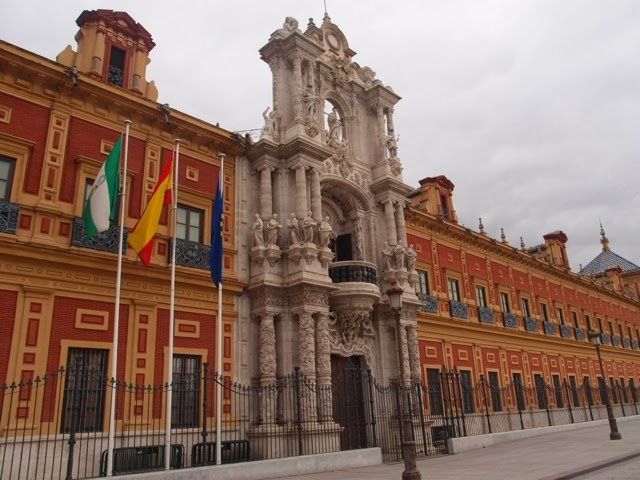The last day we woke up early to catch the bus to servilla. It is a total different county compare to barcelona. All the tourism spot is accessible by foot. We stayed here for 2 days 1 night we went to catedral de Sevilla and La Giralda once we reached there.
It is one of the largest in Christendom,with multiple architecture style of Gothic and Baroque.There are 36 flights of ramps.From each ramps, there are small window for us to look at the scenery. When we reached the top, we were able to watch more building such as Torre de Oro, Alcazar Then, we went to Parque de Maria Luisa which is just next to the plaza de Espana. Then, we went to Torre de Ore.
This morning we went to the alcazar and the Jardin. The, we headed towards Codoba.
our sevilla plan
We saw a lot of orange trees once we reached there.The photo taken just outside the airport
We stayed in Sevilla Inn backpacker
our hostel
the fanous Flamenco eggs
our first lunch in Sevilla.
.
catedral de Sevilla
The Cathedral of Saint Mary of the See better known as Seville Cathedral, is a Roman Catholic cathedral in Seville(Andalusia, Spain). It is the largest Gothic cathedral and the third-largest church in the world. It was registered in 1987 by UNESCO as a World Heritage Site, along with the Alcázar palace complex and the General Archive of the Indies.
After its completion in the early 16th century, the Seville Cathedral supplanted Hagia Sophia as the largest cathedral in the world, a title the Byzantine church had held for nearly a thousand years. The cathedral is also the burial site of Christopher Columbus. The Archbishop's Palace is located on the northeastern side of the cathedral.
plaza de Espana
Then, we went to the Maria Luisa Park.
In 1929, Seville hosted the Ibero-American Exposition World's Fair, located in the celebrated Maria Luisa Park . It was designed by Jean-Claude Nicolas Forestier. The entire southern end of the city was redeveloped into an expanse of gardens and grand boulevards. The centre of it is Parque de María Luisa, a 'Moorish paradisical style' with a half mile of: tiled fountains, pavilions, walls, ponds, benches, and exhedras; lush plantings of palms, orange trees, Mediterranean pines, and stylized flower beds; and with vine hidden bowers. Numerous buildings were constructed in it for the exhibition. Torre del Oro
The Torre del Oro is a dodecagonal military watchtower in Seville, southern Spain, built by the Almohad dynasty in order to control access to Seville via the Guadalquivir river.
Constructed in the first third of the 13th century, the tower served as a prison during the Middle Ages. Its name comes from the golden shine it projected on the river, due to its building materials (a mixture of mortar, lime and pressed hay).
The tower is divided into three levels, with the third and uppermost being circular in shape and added in 1769. The Torre de la Plata, an octagonal tower, is nearby and is believed to be built in the same era.
We went for Spagetti that night.
The alcazar de Sevilla
The Alcázar of Seville ) is a royal palace in Seville, Spain, originally a Moorish fort. It is the oldest royal palace still in use in Europe, and it was registered in 1987 by UNESCO as a World Heritage Site, along with the Seville Cathedral and theGeneral Archive of the Indies. The Almohades were the first to build a palace, which was called Al-Muwarak, on the site of the modern day Alcázar. The palace is one of the best remaining examples of mudéjar architecture. Subsequent monarchs have added their own additions to the Alcázar. The upper levels of the Alcázar are still used by the royal family as the official Seville residence and are administered by the Patrimonio Nacional






















No comments:
Post a Comment